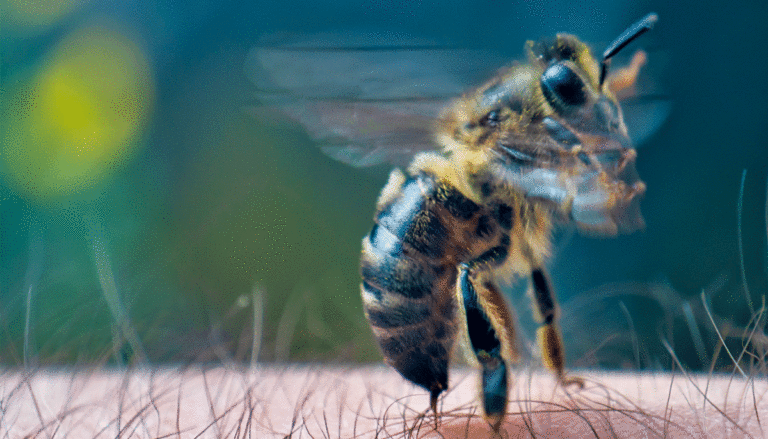Bee attacks and deaths occur every year in Tucson, Arizona, from so-called “killer bees.” Eight people were attacked while trying to rescue a toddler, with two hospitalized with life-threatening injuries.
8 people were stung in bee swarm attack, 2 with life-threatening injuries
This week in Tucson, Arizona, rescuers responded to an emergency call of a “bee incident” in which eight people were under attack, some of them trying to rescue a toddler, who was also being stung, inside a car.
A neighbor called 911 described the terrifying events that occurred after a swarm of so-called “killer bees,” a slang term for Africanized honeybees, was attacked at least eight people, KVOA reports.
“When I stepped outside, I heard people screaming,” the man said. “Two adults, male and female. Bees were chasing them, and they ended up on my property across the street.”
“While I called 911, the father went back to the car because there was a toddler in the car who was also getting stung,” the man explained. “He tried to get the toddler out of the car but was stung so many times, he had to leave.”
“Some family came out of their house, scooped up the child,” the man added. “Several members of the family getting stung, brought the child into the house. At that time, EMTs and fire arrived.”
The man told a reporter the child was stung several times.
Emergency crews treated and evaluated eight people at the scene, with two persons transported to the hospital with life-threatening injuries, according to the Pima County Sheriff’s Department, KOLD reported. The ages of the victims were not given.
Crews used hose lines to suppress the swarm of bees, and it appeared to take over two hours to clear the bees from the scene.
Deaths from killer bee attacks a common occurrence
While bee attacks are common in Tucson, one that results in eight people being stung is very rare. Unfortunately, deaths from bee stings are not uncommon.
According to the CDC, from 2000–2017, there were 1,109 deaths from hornet, wasp, and bee stings, averaging 62 deaths annually, with 80% of the deaths among males.
In July 2021, a man was killed and two others hospitalized after being stung hundreds of times by bees, with six people attacked overall, CBS reported. Three firefighters were also stung, including one who received 60 stings, NBC reported.
In May 2020, an aggressive swarm of bees attacked four dogs, three of which died, according to the Tucson fire department, USA Today reported.
In 2015, a man survived after receiving between 500 to 1000 stings, and a few months later, six people were injured in another swarm, the Guardian reported.
Such stinging incidents usually occur when a nest site is disturbed or someone ventures too close to a hive. It’s advisable to stay at least 100 feet away from any African Honey Beehive.
What makes them killer bees?
“Killer bee” is a slang term for the Africanized honey bee, which is a hybrid of the western honey bee originally produced by crossbreeding the East African lowland honey bee with various European honey bee subspecies. They were first introduced to Brazil in 1956 but escaped quarantine and arrived in North America in 1985, and were found in Texas in 1990.
They earned the reputation as “killer bees” because they are much more defensive than other varieties of honeybees, attacking perceived threats in large swarms. Africanized bees sting victims at least ten times more than their European honey bee counterparts. Because they attack in much larger numbers, as well as pursue perceived threats for greater distances, victims receive a greater dose of venom.





